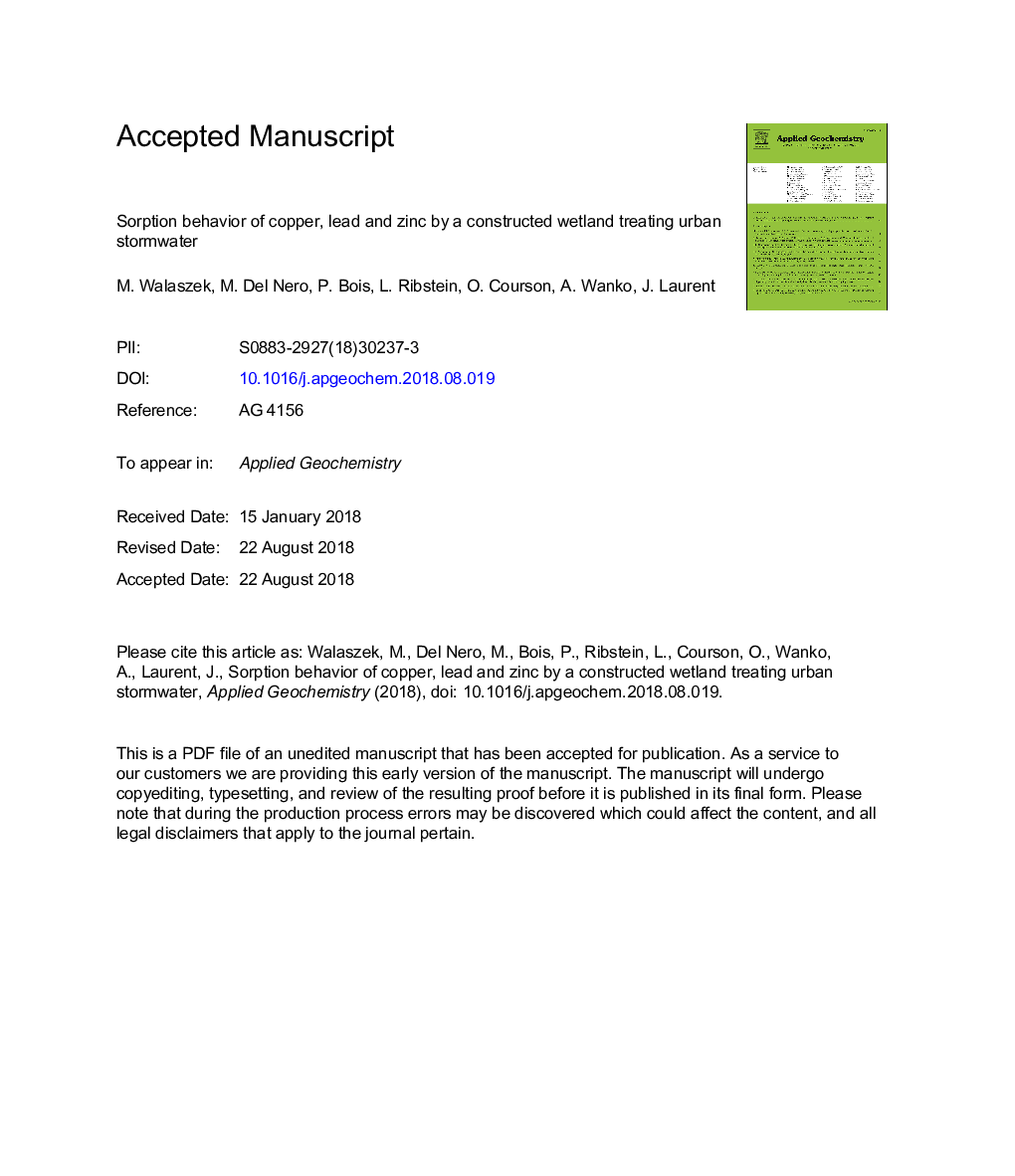| Article ID | Journal | Published Year | Pages | File Type |
|---|---|---|---|---|
| 10113905 | Applied Geochemistry | 2018 | 25 Pages |
Abstract
Sorption behaviors of copper (Cu), lead (Pb) and zinc (Zn) in a stormwater constructed wetland (CW) have been investigated by combining CW sample analysis and batch sorption experiments. The mass balance calculations suggest retention/remobilization along the CW sequence for Zn, unlike Pb and Cu. According to the mixed Tessier-BCR sequential extractions results, Pb and Zn are both mainly associated to residual fractions (incorporated in the lattice or at surfaces of primary clays, or in heavy minerals) and to Fe/Mn oxihydroxyde fractions, whereas Cu is possibly associated to carbonates minerals in the CW. In CW field conditions (metals at trace concentrations and pH lower than 7.5), batch experiment results suggest that the global affinity of the CW substrate for metals attends the following order: Pb=Cuâ¯>â¯Zn. Pb and Cu form surface complexes on high and weak affinity sites of the substrate, as hydroxyl groups of iron oxides. Zn is involved in ion exchange and/or compensation of negative charges at the surface of CW substrate (pHâ¯<â¯5). The metals sorption capacities of the substrate reveal that Zn is potentially desorbable from the substrate under the field conditions, on the contrary Cu and Pb removal efficiencies are above 90%.
Related Topics
Physical Sciences and Engineering
Earth and Planetary Sciences
Geochemistry and Petrology
Authors
M. Walaszek, M. Del Nero, P. Bois, L. Ribstein, O. Courson, A. Wanko, J. Laurent,
